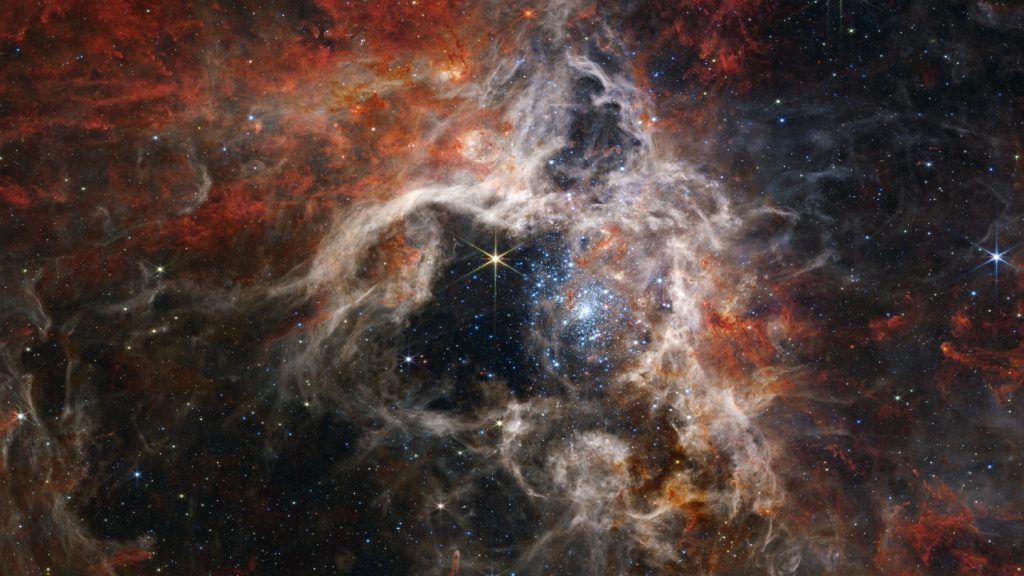Astronomers have discovered dozens of fugitive stars fleeing a dense star cluster in a satellite galaxy of the Milky Way. This finding has shed light on the influence runaway stars may have had on cosmic evolution. Massive stars within young clusters are often packed closely together, leading to encounters that can send stars careening out of the cluster. The discovery of runaway stars leaving the cluster at high speeds suggests that a significant number of these massive stars may have left their birth cluster, potentially impacting cosmic evolution in a major way.
Using data from the Gaia spacecraft, astronomer Mitchel Stoop and his team identified a cluster of massive stars called Radcliffe 136 in the Large Magellanic Cloud, a dwarf galaxy orbiting the Milky Way. Previous studies had found a few stars fleeing the cluster, but this new research revealed a surprisingly high number of 55 stars that had left the cluster at speeds exceeding 100,000 kilometers per hour in the past 3 million years. These findings suggest that as many as a third of the brightest and most massive stars born in the cluster have left, potentially contributing significantly to the ultraviolet radiation and heavy element distribution in the galaxy.
The discovery of these runaway stars challenges previous assumptions about their numbers and impact on the universe. Runaway stars, which emit ultraviolet radiation and supersonic stellar winds, can play a significant role in shaping the gas and dust around them. Additionally, the explosion of these massive stars as supernovas can spread heavy elements around the galaxy. These findings suggest that runaway stars may have a more substantial contribution to cosmic evolution than previously thought.
Researchers believe that these runaway stars could have had a profound impact on the evolution of the early universe, particularly during the epoch of reionization. While dwarf galaxies have been considered the primary source of ionizing radiation that cleared the cosmic fog of hydrogen atoms, runaway stars may have played a significant role in contributing to this process. The timing of these stars’ escape from the cluster and the direction of their flight may provide further insights into their impact on cosmic evolution and reionization.
The unique nature of the stars’ escape from the cluster, with some stars leaving at different times and in the same direction, presents opportunities for further study and understanding the mechanisms behind runaway star formation. This discovery highlights the importance of considering runaway stars as influential actors in cosmic evolution and reevaluating their impact on the wider galaxy and universe. Further research and simulations will be necessary to fully understand the role of runaway stars in shaping the cosmos.
Overall, the discovery of fugitive stars fleeing a dense star cluster in a satellite galaxy of the Milky Way has opened up new avenues for research into the influence of runaway stars on cosmic evolution. These findings challenge previous assumptions about the numbers and impact of runaway stars, suggesting that they may have had a more significant role in shaping the universe than previously thought. Further studies will be needed to fully understand the implications of these runaway stars and their potential contributions to cosmic evolution and the reionization of the early universe.


